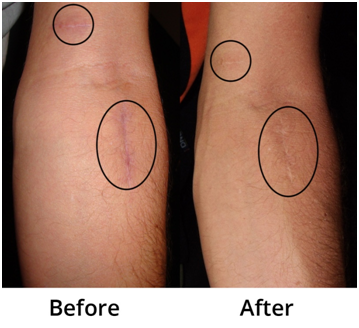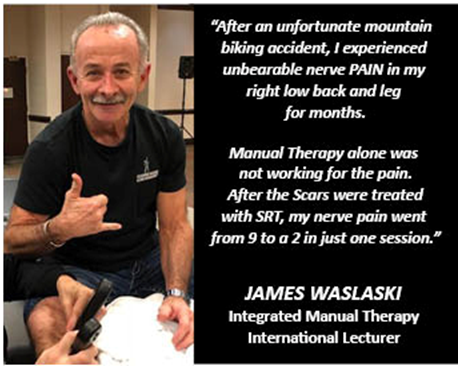MPS Scar Release Therapy
SCARS are universal and take on many forms from surgical, broken bones, sprained joints, torn muscles, inflammation, or any areas that are injured with trauma. We all accumulate scars throughout our lives, and they impact our bodies in many negative ways. C-sections and abdominal scars may be a hidden cause for millions of women suffering from chronic pain, as they have been reported to linked in literature to Chronic Post-Surgical Pain (CPSP), Problems with scars are not only physical, but emotional. [15] A sense of loss, anger, violation, humiliation and helplessness has been report associated with C-sections.[16] Depression and PTSD symptoms have been reported by women who have received C-section procedures.[16] When the millions of physical scars produced annually throughout North America are combined with the day-to-day accumulated patient traumas, the data represents a significant pre-existing pool of stress and pain patients within the general population. These accumulated traumas/scars help to explain the causation of symptoms for millions of chronic pain sufferers. The Center For Pain & Stress Research (CPSR) has developed a patented new Scar Release Therapy (SRT), a safe, clinically tested and proven solution. SRT is simple & painless to self-apply and is highly effective in reducing the negative influences of scars. SRT uses the latest advances in science to address both chronic pain and dermal scarring after any trauma or surgery. SRT applies Microcurrent Point stimulation, a patented solution that is based on the How Scars Negatively Influence Your Body Scars have special influence on the body. They restrict metabolism, pull on fascia and negatively influence the body in many ways. The above restrictions and blockages adversely affect the body in many ways, but the biggest influence is on pain. Fortunately, releasing the scar using MPS can yield powerful pain relieving outcomes results, which can improve mobility, diminish complications and decrease pain often found far removed from the scar site! MPS Scar Release therapy (SRT) is a method used to release scars where MPS is applied bi-laterally to entire length of scars and then connected to key acupuncture points for localized cellular release and electrical re-connection of the body. This technique is especially effective in treating scars and adhesions deep inside us. In general, this treatment is completely painless. You will see immediate visible changes in the appearance of the and pliability of the scar and gradually will notice a reduction in the tightness throughout the entire body. When a scar has been released there is no longer a restriction in the flow of energy, blood circulation and lymph drainage. The body can then complete the healing process. The duration of treatment will depend on how many traumas and scars you have accumulated throughout your life. Whether from injury or surgery, scar tissue can always been significantly improved and softened with MPS Scar/Adhesion Release Therapy. Published research proves MPS Scar release therapy can provide significant pain relief in the 1st session. After a single scar release application, MPS improved pain outcomes 73% on severely chronic pain patients, who suffered an average 7.61 years with an average intensity of 6.33/10. (IJCAM) Study Conclusion: The consistency of chronic pain outcome improvements through the application of MPS to physical scars suggests there is a strong relationship between chronic pain symptomology and physical scars throughout the body. These significant changes help validate the application of MPS to SCARS as an viable option to treating patients with non-specific soft tissue chronic pain. If you’re NOT applying MPS scar release to your patients, you’re missing a huge opportunity to help them improve their lives. To Master this technique, consider attending one of our Scar Release courses. Learn more: Scar References 
scientific concept of increasing skin’s inter-cellular metabolism, protein synthesis and healing functioning to re-awaken the skin’s ability to self generate. By targeting direct cellular stimulation of
microcurrent waves through the scars, this simple and discomfort free procedure works by reducing dermal trauma, adhesions and fascia restrictions – proven to deliver 73.2% pain relief after a single application. (IJCAM 2017) SRT may be safely applied clinically or at home.

